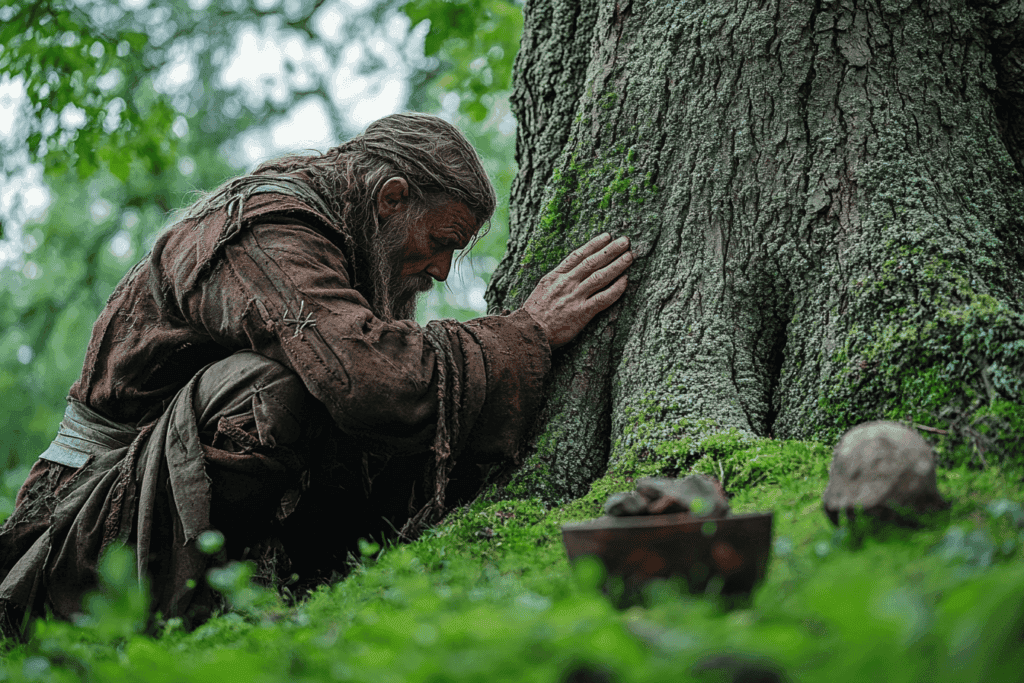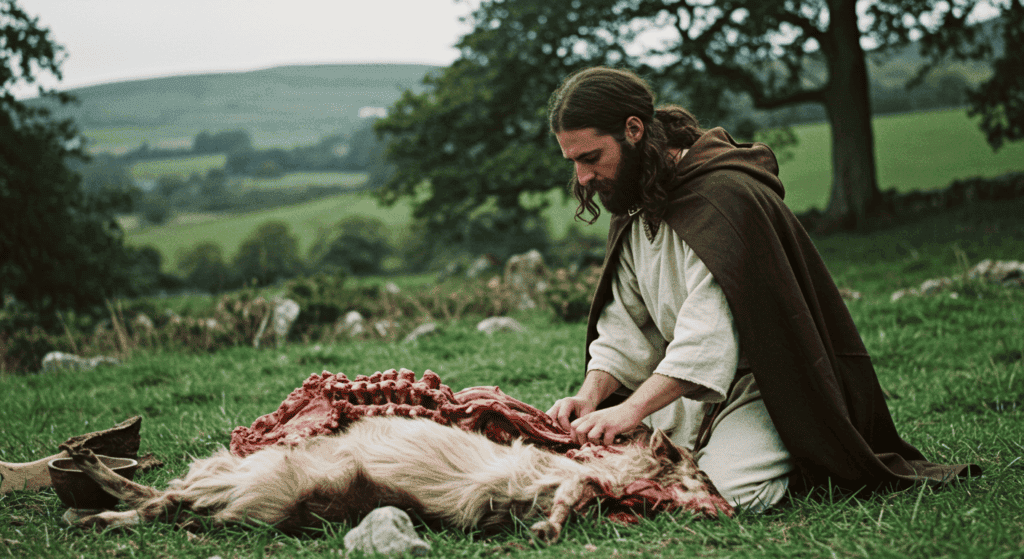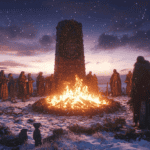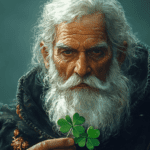
The ancient Irish Celts had a rich and complex spiritual worldview that permeated every aspect of their lives. Their beliefs, deeply rooted in nature and the supernatural, shaped their society and culture for centuries before the arrival of Christianity.
The Celtic Pantheon
Like the Norse and the Anglo-Saxons, the Irish Celts were polytheistic, believing in a multitude of gods and goddesses who governed various aspects of life and nature. Their pantheon was diverse and complex, with deities often having multiple roles and manifestations.

The Tuatha Dé Danann
At the heart of Irish Celtic mythology were the Tuatha Dé Danann, a supernatural race of beings whose name translates to “the peoples of the goddess Danu”. These divine entities were believed to be the ancestors of the Irish people and played crucial roles in their mythology.
Danu: The Mother Goddess
Danu, the mother goddess of the Tuatha Dé Danann, was associated with nature, wisdom, and prosperity. Although her origins remain unclear, she was revered as the source of power and knowledge for her divine children.
The Dagda: The Good God
The Dagda, often referred to as the “good god” or the “good father,” was a central figure in the Celtic pantheon. He was associated with fertility, agriculture, magic, and wisdom. The Dagda possessed a magical cauldron that could feed armies and never run empty, symbolizing abundance and nourishment.
The Morrigan: The Phantom Queen
The Morrigan, also known as the “Great Queen” or “Phantom Queen,” was a powerful goddess associated with war, fate, and sovereignty. She often appeared as a trio of sisters or in the form of a crow, foretelling doom on the battlefield.
Brigid: The Exalted One
Brigid, whose name means “exalted one,” was a goddess of healing, poetry, and smithcraft. Her influence was so enduring that she was later incorporated into Christian tradition as Saint Brigid, demonstrating the syncretic nature of Irish spirituality.
Lugh: The Skilled God
Lugh, known as the “Long-Handed” or “of the Long Arm,” was a god of light, arts, and crafts. He was celebrated for his many skills and was associated with the harvest festival of Lughnasadh.
Other Notable Deities
The Celtic pantheon included numerous other gods and goddesses, each with their own domains and stories. Some notable figures include:
- Ériu: The goddess of Ireland itself, associated with sovereignty and abundance.
- The Cailleach: A divine hag figure connected to winter and the creation of the landscape.
- Manannán mac Lir: The god of the sea and the Otherworld.
Celtic Worldview and Cosmology

The Irish Celts had a unique perspective on the world and their place in it, which informed their religious practices and daily lives.
Central to Celtic spirituality was the belief that the natural world was alive and imbued with divine presence. This animistic worldview led to a deep reverence for nature and the practice of worshipping at natural sites.
Trees held a central place in Celtic spirituality. The oak, in particular, was revered and often associated with druidic practices. The concept of the “World Tree” or “Tree of Life” was prevalent, symbolizing the connection between the earthly realm and the divine.
Rivers, lakes, and springs were considered sacred, often associated with specific deities or healing powers. The River Boyne, for example, was linked to the goddess Boann and was believed to be a source of wisdom.
The Celtic calendar was marked by four major festivals, each associated with important agricultural and spiritual events:
- Samhain (November 1): Marking the beginning of winter and the Celtic New Year.
- Imbolc (February 1): Celebrating the first stirrings of spring.
- Beltane (May 1): Welcoming the arrival of summer.
- Lughnasadh (August 1): Honoring the harvest and the god Lugh.
These festivals were times of great communal celebration and ritual, reinforcing the cyclical nature of time in Celtic thought.
Sacred Animals
Certain animals held special significance in Celtic beliefs:
- Boars: Symbols of courage and strength
- Horses: Associated with sovereignty and the goddess Epona
- Ravens and crows: Connected to prophecy and the goddess Morrigan
- Salmon: Representing wisdom and knowledge
These animals often appeared in Celtic art and mythology, serving as totems or manifestations of divine power.
The Otherworld
The Celts believed in an Otherworld, a realm parallel to our own where the gods dwelled and the dead resided. This Otherworld was not seen as entirely separate but rather intertwined with the mortal world, with certain locations acting as portals between the two.
The Celts believed in the immortality of the soul, a concept that greatly influenced their worldview and approach to life and death. The Celtic belief in an afterlife and the immortality of the soul contributed to a strong warrior ethos, contributing to Celtic bravery in battle. Warriors were honored in society, and dying in battle was seen as a noble end.
Some evidence suggests that the Celts may have believed in a form of reincarnation or transmigration of souls. This concept aligned with their cyclical view of time and nature.
Religious Practices and Rituals
The religious practices of the pre-Christian Irish Celts were diverse and deeply ingrained in their society.
Druids served as the religious leaders, judges, and keepers of knowledge in Celtic society. They were responsible for performing rituals, interpreting omens, and maintaining oral traditions. The role of druids was so significant that their influence extended beyond the spiritual realm into politics and education.
The Celts built elaborate structures for worship, often aligning them with celestial events. These included:
- Stone circles
- Hillforts
- Sacred groves
- Holy wells and springs
Many of these sites continued to hold significance even after the arrival of Christianity, with some being repurposed as Christian holy places. The early Church in Ireland sought to occupy places associated with the Tuatha De Danann like creating an association between St Patrick and Croagh Patrick, which had formerly been the site of a pilgrimage dedicated to Lugh, and building churches at the locations of sacred pagan springs and stone monuments.
Sacrifices played a crucial role in Celtic religious practice. While animal sacrifices were common, there is evidence that human sacrifices also occurred, though they were likely rare and reserved for extreme circumstances. The Celts also made offerings to their gods by burying or depositing valuable objects in sacred places. The Broighter gold hoard, for example, is believed to have been an offering to Manannán mac Lir, the sea god.
Divination and Prophecy

The Celts placed great importance on divination and prophecy. Methods included:
- Interpreting natural phenomena
- Reading animal entrails
- Observing the flight patterns of birds
One particularly notable practice was the tarbhfhess or bull-feast, a ritual for choosing kings that involved a man eating the meat and drinking the blood of a sacrificed bull before receiving a prophetic dream.
The concept of sacred kingship was central to Celtic society. Kings were seen not just as political leaders but as representatives of the divine on earth. The ritual marriage between the king and the goddess of the land was believed to ensure prosperity and fertility for the kingdom.
The Transition to Christianity
The arrival of Christianity in Ireland in the 5th century CE marked the beginning of a significant transformation in Irish spiritual life. However, this transition was not abrupt or complete.
Many pre-Christian beliefs and practices were incorporated into Irish Christianity. Sacred wells became associated with Christian saints, and pagan festivals were repurposed as Christian holy days. This syncretic approach allowed for a smoother transition and the preservation of many aspects of Celtic spirituality.






I encourage you to read ‘Chronicles in Pre-Celtic Europe’ by Raubenheimer. Before we were polytheistic, we were monotheistic. It was the Magi from the East that convinced our youth that our heroes and leaders were gods and goddesses. The 4.2 ka BP event nearly wiped out people out, then people from the East filtered in. It is really fascinating! My family (self, hubby, and four children) have been doing a deep history dive into our people. Many don’t believe what I’ve said. To each his own, but it is worth a read. Feel free to email with questions/comments. 🙂